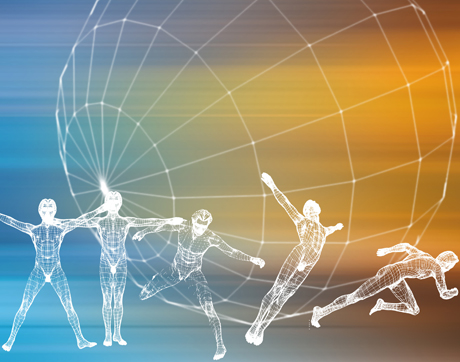Biomedical Engineering in Sports Medicine
Biomedical Engineering in Sports Medicine


Engineers are helping to fuel the growing and diversifying field of sports medicine.
Date updated: Oct. 31, 2024
In decades past, athletic trainers and sports medicine professionals have largely focused on athletes. But that’s no longer the case, as organizations seek to help an aging population better handle mobility issues and meet the growing demand of non-athletes looking to enhance their everyday performance.
Professional teams spend millions of dollars for these kinds of things,” Nick Tsinoremas, Ph.D., director of the Frost Institute for Data Science and Computing (IDSC) recently told the University of Miami. “We want it to be available to people who are middle-aged and need a knee replacement or elderly people who need to be more active.
Dr. Tsinoremas, who cofounded the University of Miami’s new “Design Thinking for Human Performance” in partnership with the UHealth Sports Medicine Institute, is hardly alone in wanting to advance the field.
In October, a biomedical engineering professor at the University of Virginia received FDA clearance for an AI muscle health analysis tool that could make precision medicine possible across a wide range of sports medicine and orthopedics applications. Biomedical engineering researchers in Virginia secured $2.9 million from the National Institutes of Health to develop a model that will identity people at risk for a second ACL injury. And the University of Cincinnati recently launched an Adaptive Athletics program that marries engineering and medicine to focus, in part, on researching and designing sports equipment for people with disabilities.
Whether working on ergonomic prosthetics with biocompatible materials, mechanical bracing apparatus for weak joints, or monitoring systems for recovering injuries, biomedical engineers can play a crucial role in the interdisciplinary field of sports medicine.
One person who has made this passion her profession is Jennifer Sanfilippo-Nackers, now an assistant director of sports medicine at the University of Wisconsin-Madison. Though she’d participated in sports in high school and even helped the athletic trainer during the off seasons, Sanfilippo-Nackers entered college with a different career path in mind.
“I began my college experience studying in the biology department as a general student with the hopes of continuing in medicine,” she said to ASME in 2011. “But, as many young students find themselves homing in on specific interests, I eventually moved into the kinesiology department. There, I sought a degree in athletic training.”
While in college, she had the opportunity to work with athletes recovering from injuries, follow them to away games, and observe various medical professionals demonstrate their expertise. “I realized my true love of research—and my unknown desire to become an engineer,” she said.
After earning a B.S. degree in biology and another in athletic training, Sanfilippo-Nackers decided to pursue an M.S. degree in biomedical engineering, specializing in sports medicine.
Upping Her Game
“The University of Wisconsin Madison Athletic Training Education Program features a strong mix of basic sciences, kinesiology courses, and athletic training subject matter [as well as] clinical experiences in intercollegiate and secondary school settings,” she said. “Working directly with school athletes is unique to the Athletic Training program.”
As part of the graduate program at the University of Wisconsin-Madison, she took courses in materials, mechanics, statistics, and biology, all of which informed her research. She also spent one semester gaining clinical experience with a collegiate team and another at a high school, which gave her the opportunity to work directly with a wide array of athletes and injury types.
When it came to settling on research, she appreciated that “in biomedical engineering, you can have a variety of experiences at the master’s level based on your particular research interests. As my interests are more biomechanically related specifically to orthopedics, I stud[ied] hamstrings and work[ed] directly with the physical therapists and athletic trainers.”
Sanfilippo-Nackers was fascinated not only by how one injured muscle can affect all parts of a person’s gait (or way of walking), but also by how the healing process impacts things. “Normally, as an athletic trainer, I saw the overall effect,” she said, but in her graduate research she was able to leverage MRIs to see and study tissue-level healing.
She and other researchers used specialized equipment to see when muscles fired, how much force they applied, and which muscles did the most work. They were then able to calculate peak torque of specific muscle groups, and perform data analysis directly informed by mechanical engineering.
“I use[d] mechanical concepts at almost every step, starting with proper function of equipment, proceeding with testing forces, and ending with our analysis,” she said. After analyzing an injured athlete, the team would help with new rehabilitation techniques and then retest subjects to determine how well the interventions had worked on the injury.
Sanfilippo-Nackers saw her colleagues from her graduate research team move to academic laboratories, national laboratories including the National Institute of Health, medical equipment design, healthcare companies, and more. She graduated with the goal of helping university athletes spend less time in recovery and more time playing—a goal she’s now achieving.





